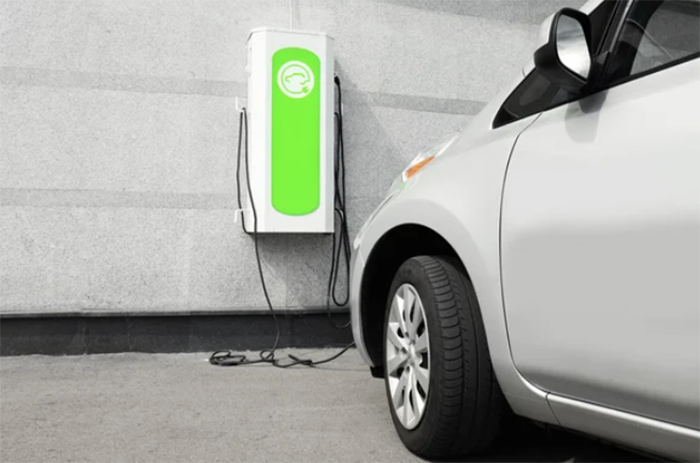While looking for an electric vehicle, you need to think about the expense of both the vehicle and the electric vehicle charger. Energizing an electric vehicle is essentially as straightforward as connecting it you can awaken to a completely energized vehicle. Nonetheless, picking the right charging station for your family can be a considerable amount more muddled.
So whether you’re anticipating purchasing an electric vehicle interestingly or are thinking about updating your flow charging station, here’s the lowdown on home electric vehicle chargers.
Level 1 versus Level 2 charging
The two most normal sorts of private electric vehicle charging stations available are Level 1 and Level 2 charging stations. (Level 3 exists, however, isn’t normally utilized in private homes now.) Level 1 accusing regularly happens to your vehicle and is less strong than a Level 2 charging station, which is bought independently.
The more remarkable a charging station is, the faster you can recuperate range. The Level 1 charging station can recuperate 4 to 5 miles of reach each hour. For a more extended territory, an all-electric vehicle, a Level 1 charge can be illogical. A Nissan Leaf, for instance, would be charged for 16 hours before you recuperated the vehicle’s full reach.
Level 2 chargers, then again, recuperate 25 to 30 miles of reach each hour, which makes sense for Suzanne Guinn, overseer of advertising at ClipperCreek, an electric vehicle hardware organization. That permits you to charge most electric vehicles in four hours completely.
What amount does it cost to introduce an electric vehicle charger?
The age of your home, your electrical board limit, the kind of establishment, and where your electrical board is found will all influence the last expense of placing an electric vehicle charger in your home.
A Level 2 charger will cost a smidgen more: The station will cost generally $500 to $700, and the parts and work will probably cost $1,200 to $2,000. The establishment cycle could cost more if your central matter of charging will require major electrical redesigns.
You’ll need to get a few statements from electrical technicians and search for an installer acquainted with electric vehicle home power adapters.
One more expense to consider is allowing: Certain states to expect mortgage holders to get a grant while introducing charging stations. In certain spots, you can get a $50 over-the-counter license, while others will expect as much as $200 and plans drawn by a specialist. Research the nearby standards on introducing a charging station and allowing it before you make all necessary endorsements at the showroom.
For anything charger you select, make certain to purchase something that is “UL-recorded,” and that implies it has been tried for wellbeing by the Underwriters Laboratories for U.S. use.
How much charging power do you really want?
Level 2 chargers come in qualities from 16 to 80 amps. Each electric vehicle has a most extreme charging limit, generally somewhere in the range of 3.3 and 10 kilowatt-hours, or roughly 11 to 30 recuperated miles each hour. Here is a valuable graph contrasting the charging abilities of famous vehicles, for example, the Ford Focus Electric and the Mercedes-Benz B-Class Electric.
That implies you ought to survey your vehicle’s charging limit prior to putting resources into a more grounded charger. In any case, it could pay off to think long haul.
All Level 2 chargers run on a 240-volt circuit-very much like a garments dryer or other strong machine. How much amperage you really want will rely upon the charger, yet you will need to ensure that you are not overburdening your electrical board. Assuming you have a more established home, you could have to add some limits. Clearly, this ought to be finished by an electrical expert.
Module or designed charger?
Chargers come in two kinds: module chargers that go into an outlet and chargers that are designed straightforwardly into the electrical board in your home. There are advantages and disadvantages to each sort. Module chargers are great since they can accompany you out and about, you can take them with you when you move, and assuming they at any point break or should be adjusted, you can simply turn off them. It’s likewise simpler to redesign a module power adapter later. The drawback is that it’s most likely going to be more costly to add an outlet to your home than to wire the charger straightforwardly into your board.
A designed establishment implies that you can’t move the charger without the assistance of a circuit tester. In any case, on the off chance that your electrical board is in your carport, it’s very likely going to be more affordable to introduce than an outlet. Assuming that you have a dryer power source in your carport as of now, it very well may be feasible to plug straightforwardly into it on the off chance that it has sufficient amperage. Various power adapters have different attachment types, so your unit may or probably won’t fit in your current dryer outlet. Also, the National Electrical Code doesn’t permit input links of more than 12 inches, so your charger would have to sit something like a foot from the dryer outlet.
Where would it be a good idea for you to put your charger?
While looking for units, think about the length of the string. The greatest length permitted by the National Electrical Code is 25 feet, however, the string comes in more limited lengths too. You need to have the option to effectively arrive at your vehicle with the charger, and you don’t maintain that the string should be pulled tight. In the event that you have in excess of a one-vehicle carport, you’ll most likely need to go for the 25-foot string so you can charge your vehicle from any leaving position.






